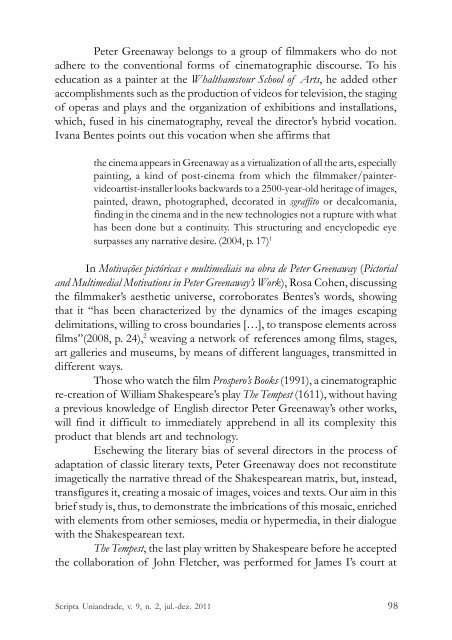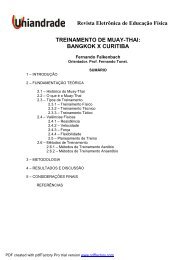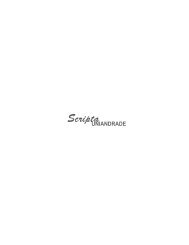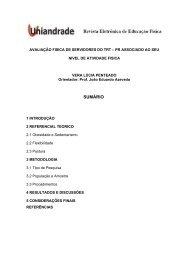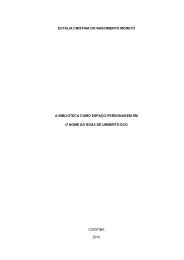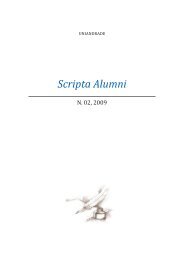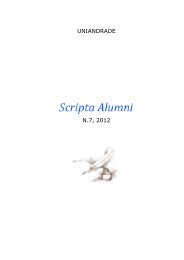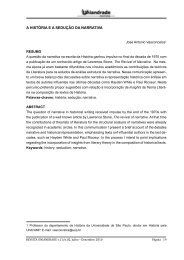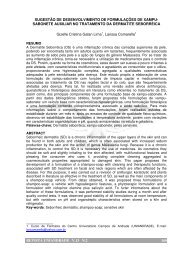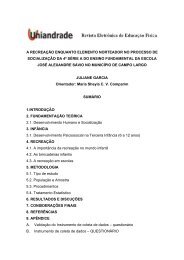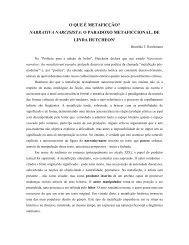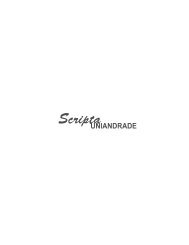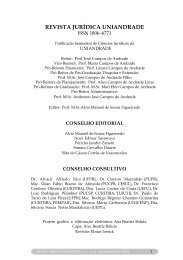Scripta 9_2_link_final.pdf - Uniandrade
Scripta 9_2_link_final.pdf - Uniandrade
Scripta 9_2_link_final.pdf - Uniandrade
You also want an ePaper? Increase the reach of your titles
YUMPU automatically turns print PDFs into web optimized ePapers that Google loves.
Peter Greenaway belongs to a group of filmmakers who do not<br />
adhere to the conventional forms of cinematographic discourse. To his<br />
education as a painter at the Whalthamstour School of Arts, he added other<br />
accomplishments such as the production of videos for television, the staging<br />
of operas and plays and the organization of exhibitions and installations,<br />
which, fused in his cinematography, reveal the director’s hybrid vocation.<br />
Ivana Bentes points out this vocation when she affirms that<br />
the cinema appears in Greenaway as a virtualization of all the arts, especially<br />
painting, a kind of post-cinema from which the filmmaker/paintervideoartist-installer<br />
looks backwards to a 2500-year-old heritage of images,<br />
painted, drawn, photographed, decorated in sgraffito or decalcomania,<br />
finding in the cinema and in the new technologies not a rupture with what<br />
has been done but a continuity. This structuring and encyclopedic eye<br />
surpasses any narrative desire. (2004, p. 17) 1<br />
In Motivações pictóricas e multimediais na obra de Peter Greenaway (Pictorial<br />
and Multimedial Motivations in Peter Greenaway’s Work), Rosa Cohen, discussing<br />
the filmmaker’s aesthetic universe, corroborates Bentes’s words, showing<br />
that it “has been characterized by the dynamics of the images escaping<br />
delimitations, willing to cross boundaries […], to transpose elements across<br />
films”(2008, p. 24), 2 weaving a network of references among films, stages,<br />
art galleries and museums, by means of different languages, transmitted in<br />
different ways.<br />
Those who watch the film Prospero’s Books (1991), a cinematographic<br />
re-creation of William Shakespeare’s play The Tempest (1611), without having<br />
a previous knowledge of English director Peter Greenaway’s other works,<br />
will find it difficult to immediately apprehend in all its complexity this<br />
product that blends art and technology.<br />
Eschewing the literary bias of several directors in the process of<br />
adaptation of classic literary texts, Peter Greenaway does not reconstitute<br />
imagetically the narrative thread of the Shakespearean matrix, but, instead,<br />
transfigures it, creating a mosaic of images, voices and texts. Our aim in this<br />
brief study is, thus, to demonstrate the imbrications of this mosaic, enriched<br />
with elements from other semioses, media or hypermedia, in their dialogue<br />
with the Shakespearean text.<br />
The Tempest, the last play written by Shakespeare before he accepted<br />
the collaboration of John Fletcher, was performed for James I’s court at<br />
<strong>Scripta</strong> <strong>Uniandrade</strong>, v. 9, n. 2, jul.-dez. 2011<br />
98


